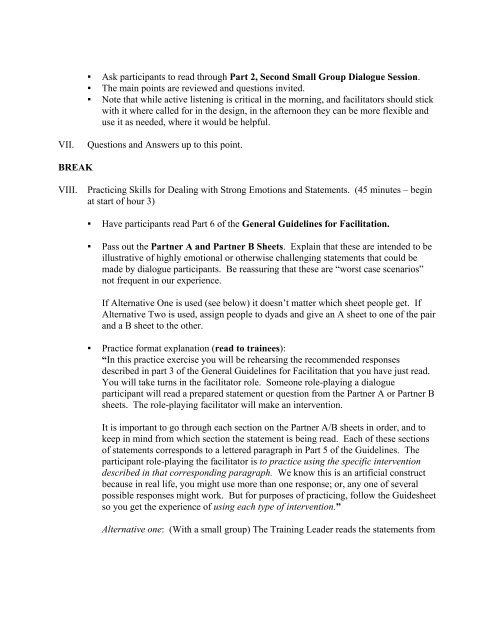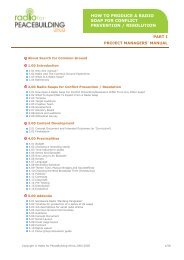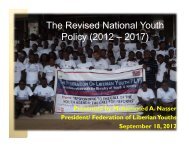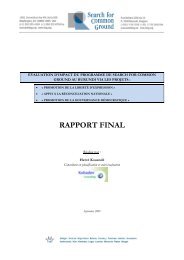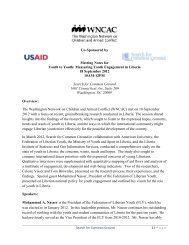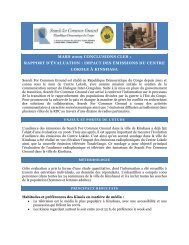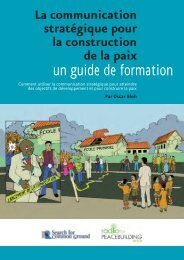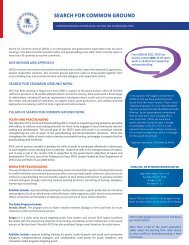The Common Ground Network for Life and Choice Manual
The Common Ground Network for Life and Choice Manual
The Common Ground Network for Life and Choice Manual
Create successful ePaper yourself
Turn your PDF publications into a flip-book with our unique Google optimized e-Paper software.
• Ask participants to read through Part 2, Second Small Group Dialogue Session.<br />
• <strong>The</strong> main points are reviewed <strong>and</strong> questions invited.<br />
• Note that while active listening is critical in the morning, <strong>and</strong> facilitators should stick<br />
with it where called <strong>for</strong> in the design, in the afternoon they can be more flexible <strong>and</strong><br />
use it as needed, where it would be helpful.<br />
VII.<br />
Questions <strong>and</strong> Answers up to this point.<br />
BREAK<br />
VIII.<br />
Practicing Skills <strong>for</strong> Dealing with Strong Emotions <strong>and</strong> Statements. (45 minutes – begin<br />
at start of hour 3)<br />
• Have participants read Part 6 of the General Guidelines <strong>for</strong> Facilitation.<br />
• Pass out the Partner A <strong>and</strong> Partner B Sheets. Explain that these are intended to be<br />
illustrative of highly emotional or otherwise challenging statements that could be<br />
made by dialogue participants. Be reassuring that these are “worst case scenarios”<br />
not frequent in our experience.<br />
If Alternative One is used (see below) it doesn’t matter which sheet people get. If<br />
Alternative Two is used, assign people to dyads <strong>and</strong> give an A sheet to one of the pair<br />
<strong>and</strong> a B sheet to the other.<br />
• Practice <strong>for</strong>mat explanation (read to trainees):<br />
“In this practice exercise you will be rehearsing the recommended responses<br />
described in part 3 of the General Guidelines <strong>for</strong> Facilitation that you have just read.<br />
You will take turns in the facilitator role. Someone role-playing a dialogue<br />
participant will read a prepared statement or question from the Partner A or Partner B<br />
sheets. <strong>The</strong> role-playing facilitator will make an intervention.<br />
It is important to go through each section on the Partner A/B sheets in order, <strong>and</strong> to<br />
keep in mind from which section the statement is being read. Each of these sections<br />
of statements corresponds to a lettered paragraph in Part 5 of the Guidelines. <strong>The</strong><br />
participant role-playing the facilitator is to practice using the specific intervention<br />
described in that corresponding paragraph. We know this is an artificial construct<br />
because in real life, you might use more than one response; or, any one of several<br />
possible responses might work. But <strong>for</strong> purposes of practicing, follow the Guidesheet<br />
so you get the experience of using each type of intervention.”<br />
Alternative one: (With a small group) <strong>The</strong> Training Leader reads the statements from


